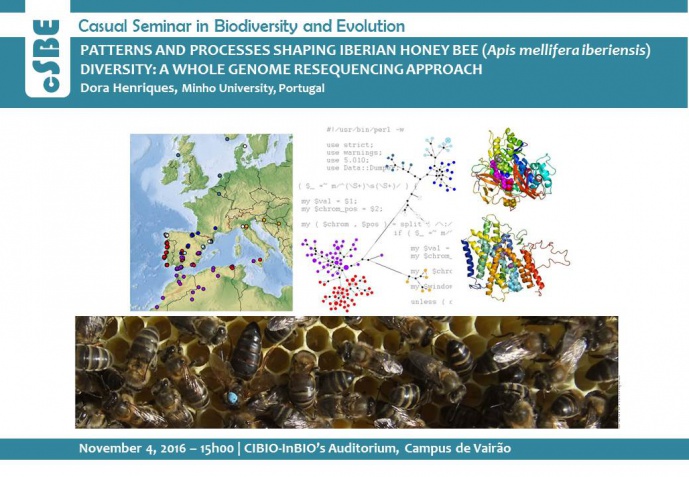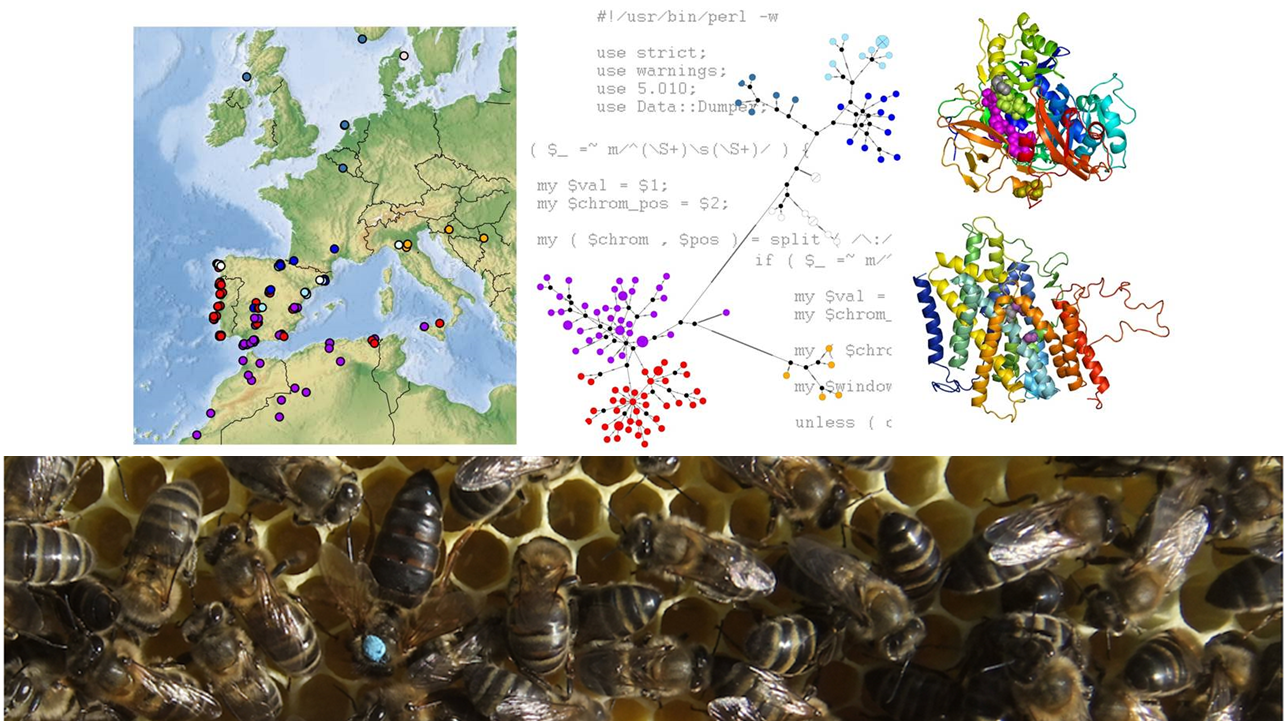PATTERNS AND PROCESSES SHAPING IBERIAN HONEY BEE (Apis mellifera iberiensis) DIVERSITY: A WHOLE GENOME RESEQUENCING APPROACH

CASUAL SEMINAR IN BIODIVERSITY AND EVOLUTION

Apis mellifera is naturally distributed in Europe, Africa, Middle East, and western Asia. In this extensive range, local adaptation has enabled the evolution of over 30 subspecies, which have been grouped into four main lineages (A–African, M–western European, C–eastern European, and O–Middle Eastern). In western Europe, Iberia naturally harbors the Iberian honey bee subspecies, A.m. iberiensis, which, as other Iberian organisms, is characterized by complex diversity patterns. While over the last 20 years the Iberian honey bee has been scrutinized with a variety of genetic markers including morphology, allozymes, mtDNA, microsatellites, and SNPs, the patterns and processes that have been revealed have yet to be fully understood.
Understanding Iberian honey bee diversity patterns and underlying processes is an important first step towards preserving this important hotspot of honey bee diversity. However, this is a challenging undertake given that Iberian honey bees’ diversity patterns have been shaped by recurring phenomena involving expansion, contraction, admixture and adaptation. In addition to natural processes, contemporary human-mediated processes involving movement of colonies within (migratory beekeeping) and between lineages (introduction of C-lineage queens), selective breeding, along with accidental introductions of exotic pests and diseases, may have further complicated patterns of variation. Here, I will (i) present the main findings obtained by the research team of CIMO with several molecular markers including mitochondrial DNA, SNPs, and whole genome resequencing, (ii) discuss the relative importance of demographic and selective processes in shaping Iberian honey bee diversity patterns, and (iii) point out the questions that remain unanswered. Our findings highlight the complexity of the Iberian honey bee patterns and reinforce the importance of Iberia as a reservoir of Apis mellifera diversity.
Dora Henriques is a PhD student attending the doctoral program of Molecular and Environmental Biology at Minho University. She is focused on understanding the processes shaping the diversity of the Iberian honey bee genome, using whole genome resequencing and bioinformatics tools. She is working under the supervision of Dra. Maria Alice Pinto (CIMO/IPB), Dr. Filipe Costa (CBMA/UMinho), and Dr. Matthew Webster (Uppsala University).
[Host: Paulo Célio Alves, Conservation Genetics and Wildlife Management]
Image credits: Dora Henriques